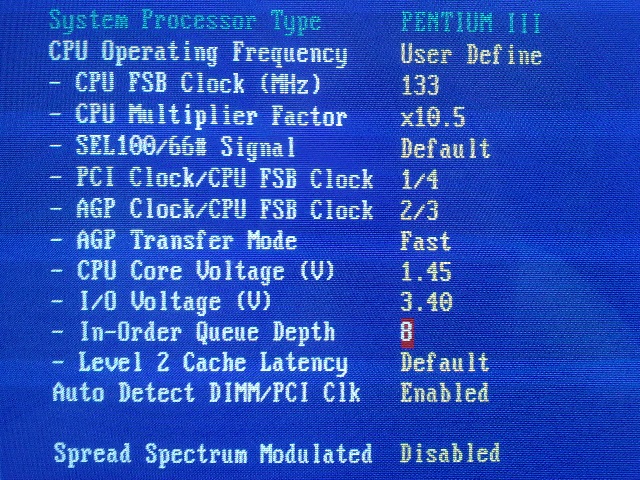archsan wrote:What's the make of this board, 1999-2000? Are those comments above related to the 'capacitor plague era' or just Abit-specific? […]
Show full quote
swaaye wrote:Likely to need capacitor replacement. Abit boards of that time usually do.
LunarG wrote:The Abit BP6 was an excellent board back in the days. I had one, and it was fast, stable and well designed, but as somebody else said, watch out for dried out caps.
What's the make of this board, 1999-2000? Are those comments above related to the 'capacitor plague era' or just Abit-specific? Also, though I read that Abit was one of the few who admitted to be using flawed capacitors (around 2003-2005 IIRC), I got the impression that they're not the only one in this, but still they were punished anyway for acknowledging the problem.
That's why I would generally avoid using motherboards from between 440BX-era to post-2008 or so (don't have need for them anyway), unless I plan on recapping the entire board. I didn't keep my KT7-RAID long enough to see any problems. But in this case, it's a BX, so I'm curious. Any insights/experience on Abit BX boards' longevity in general, anyone?
I used to go through lots of 2nd hand motherboards, and I've seen some of the later ABit BX models. The ones I remember for sure are the BX133-RAID and the BE6-II. Not sure if I saw any others.
ABit used "Jackcon" brand capacitors at that time. Although lots of motherboards had bad capacitors in those days, Jackcon are in the absolute lowest tier IMO. They're virtually guaranteed to fail, as quick or quicker than anything else ever did. On the plus side, both of those boards came back to life when I recapped them, so I believe they are salvageable. The BE6-II does have a dead IDE port though, and from what I read, this was a common failure on those. I don't know if the caps contributed to that.
The BX133 had no issues after being recapped (except I had to finish replacing caps I didn't replace the first time..). I gave it to a relative who used it for about 2 years, and it was playing games quite a bit. I have it stored since then and it still works last I knew.
A friend of mine back around ~2000 had an ABit Coppermine P3 motherboard (don't know what model) which died 3 times. The first 2 times it was replaced under warranty, the 3rd time, warranty was expired. I didn't know about the cap issues back then, but I would bet that's what was killing them. From then on he swore off ABit, obviously.
It's too bad, because they made amazing enthusiast niche motherboards, but these rampant failures ruined their reputation.
ABit switched to good quality caps late in the Socket-A era, when they admitted the problem. Prior to that, back at least to 99, many of their boards have Jackcons and I think those were universal at the time of the BX boards.
Except for the capacitor issues, ABit are my favorite 440BX boards. I love how tweakable they are. Their BIOS have more manual controls and less training wheels than any competing board I've seen.
brostenen wrote:Is the ABIT BP6 motherboard something that are: Good? just okay? or a pile of garbage?
I never had a BP6, or any dual CPU ABit. I do generally like ABits as described above, if it's still alive and you can replace the caps. If you aren't ready to replace caps, then forget it. If it has seen much use, the caps are bad, and if it hasn't seen much use, it should get good caps to keep it healthy.
Nowadays I wouldn't find dual Mendocino Celerons very appealing. The BP6 is an interesting bit of history and a nice example of what ABit was doing in those days, but you can just as easily get a board with dual Coppermine P3 support. I wouldn't bother with that either though, I'd rather have a good single CPU board, especially if it's for games. Single boards usually have an easier time with overclocking, if that matters to you.
But we're talking obsolete hardware here, so to some degree there's always an emotional component of why we want certain things. Anything with a BX chipset is by default awesome. And that board has a website named after it, so that tells you something.


